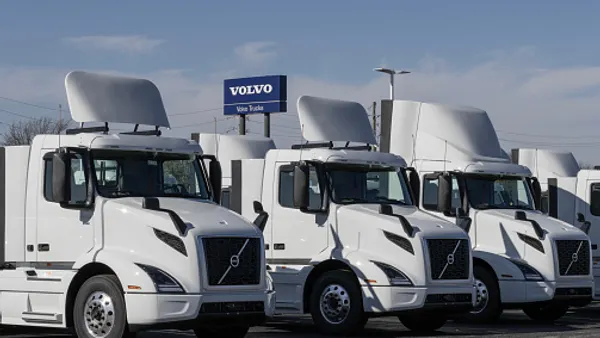Dive Brief:
- Walmart diverted 81% of of unsold products, packaging and other waste from landfills in the U.S. in 2017 and 78% globally, according to the company's 2018 Global Responsibility Report.
- The company is working toward the goal of "zero waste" to landfills by 2025 from its supply chain and operations in Canada, Japan, the U.K. and U.S. According to the Zero Waste International Alliance, this means the company must achieve "at least 90% diversion from landfills, incinerators and the environment," along with future goals that lead to a continuous progression toward zero.
- Reducing waste and greenhouse gas emissions and advancing water and land stewardship are the company's top sustainability priorities.
Dive Insight:
The report outlines how Walmart intends to "work with suppliers and customers to prevent products and materials from becoming waste upstream and downstream in pursuit of a more circular economy."
In 2017, most of the company's waste diversion (69%) was achieved through recycling. Donations to people and conversion to animal feed were the end use of 4% each of diverted waste. Other strategies, which represent 1% or less of waste diversion, include composting, anaerobic digestion, incineration and waste-to-energy schemes.
Minimizing waste and diverting it from landfills is just one part of Walmart's sustainability efforts. The retailer vowed to reduce greenhouse gas emissions throughout its supply chain by a billion tons by 2030 in what it calls Project Gigaton. The company reports cutting 20 million tons of greenhouse gas emissions in the first year of the program.
"We aim not only to lower our own emissions, but to galvanize collective action across the retail supply chain to bend the curve on emissions—removing a gigaton through initiatives in energy, waste, agriculture, packaging, natural capital and product design," wrote Kathleen McLaughlin, Walmart's Chief Sustainability Officer in the 2018 report.
Walmart's sustainability efforts are unique in that the company seeks to leverage more than its own footprint. The company has been clear that its sustainability goals extend throughout its supply chain and, as the largest retailer in the world, creates the potential to be a global leader.













